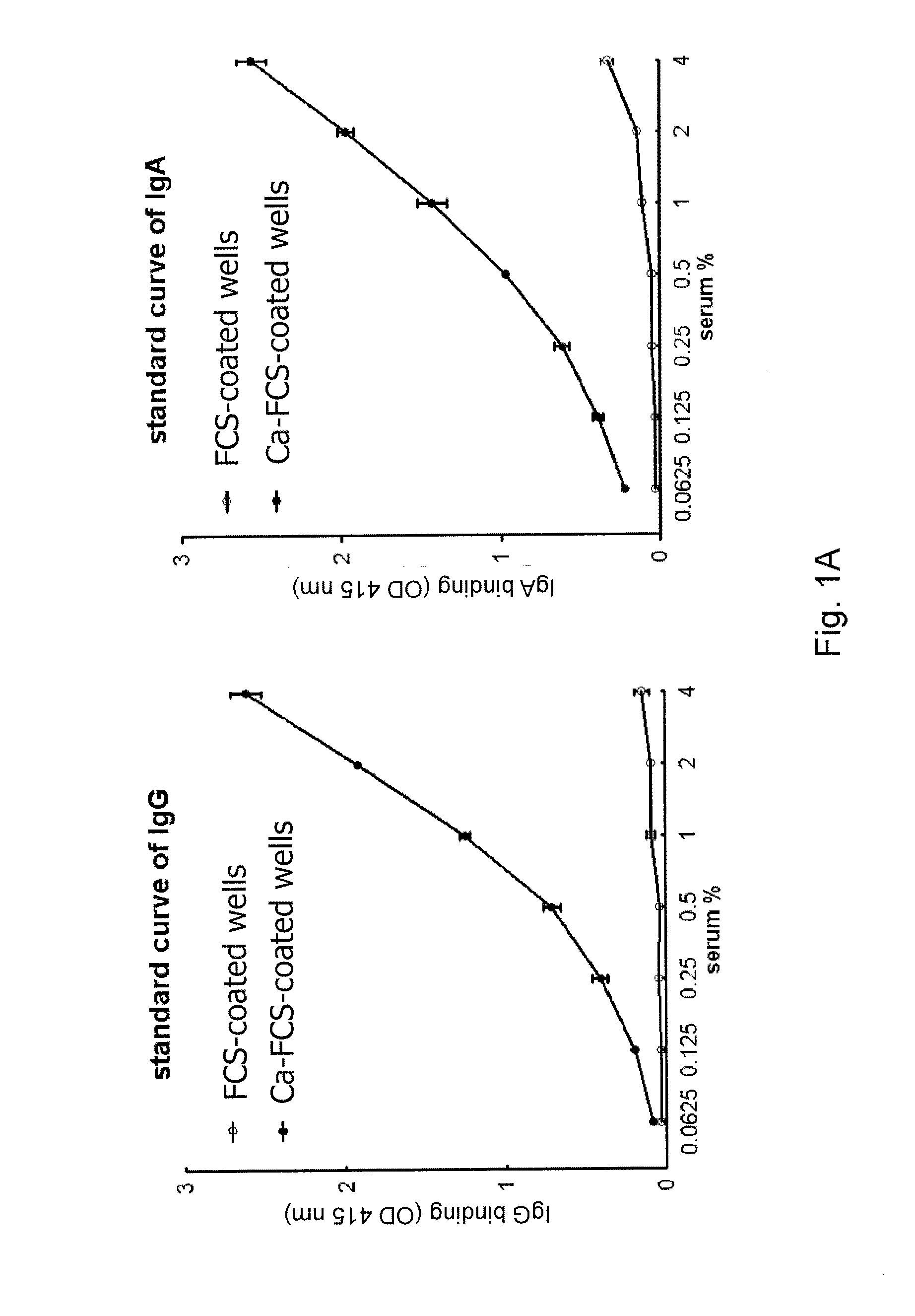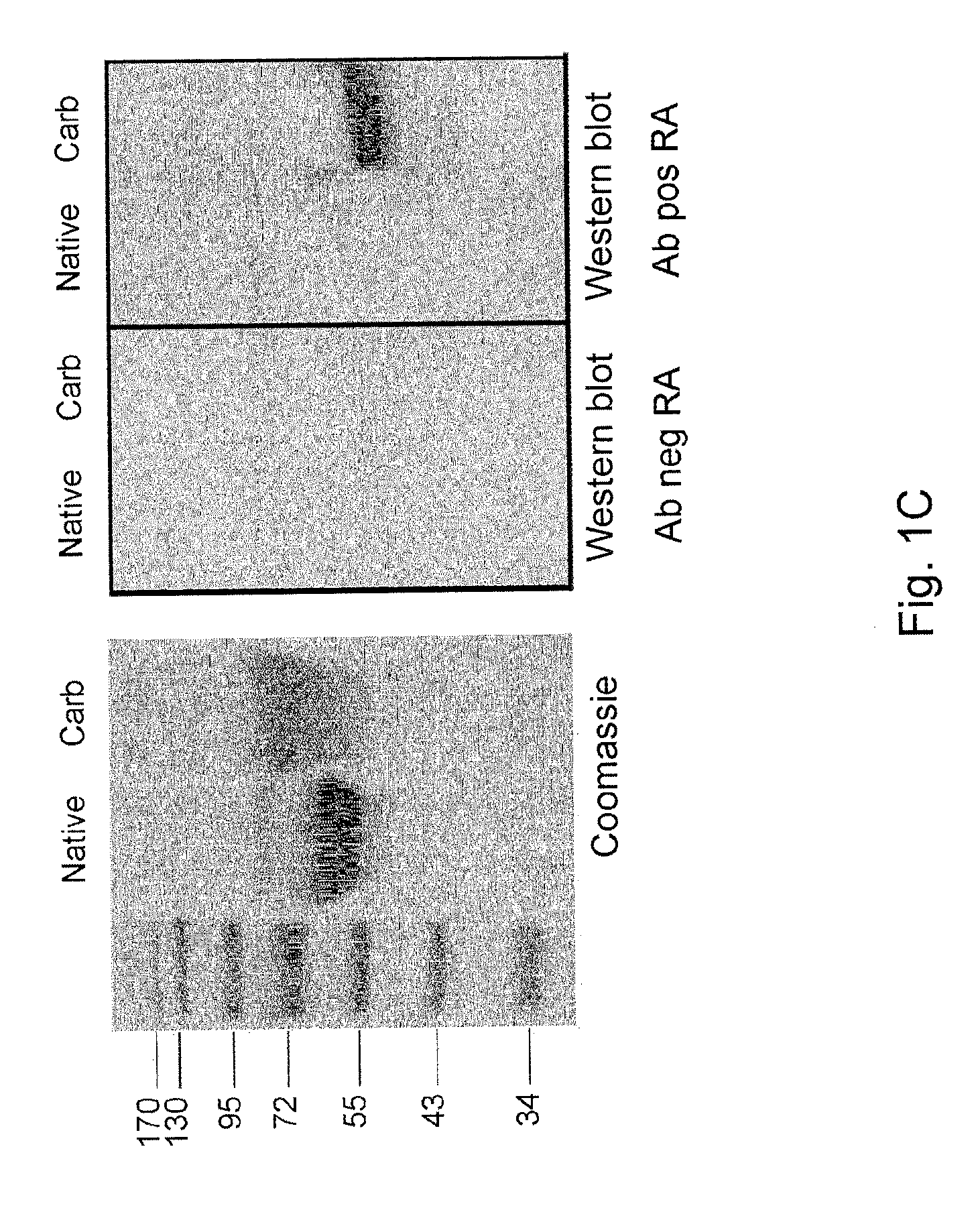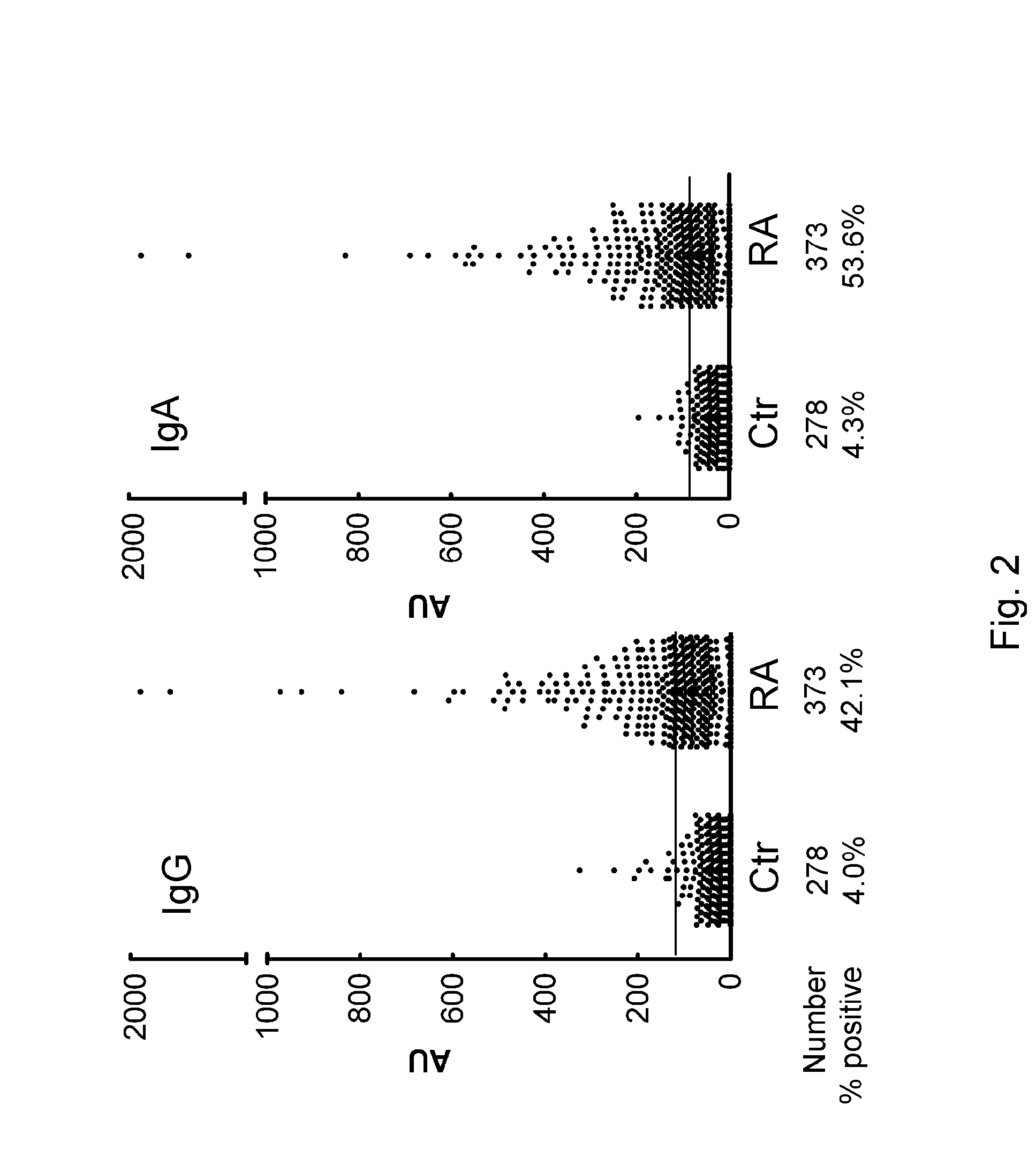Anti-carbamylated protein antibodies and the risk for arthritis
a technology of anti-carbamylated protein and anti-carbamylated protein, which is applied in the field of post-translational modification and arthritis, can solve the problems of difficult diagnosis of patients with joint-associated pain, poor diagnosis of arthritis or individuals at risk of arthritis, and high cost of treatmen
- Summary
- Abstract
- Description
- Claims
- Application Information
AI Technical Summary
Benefits of technology
Problems solved by technology
Method used
Image
Examples
example 1
Results
Detection of Anti-CarP Antibodies
[0090]A novel ELISA was generated to detect anti-CarP antibodies from serum and synovial fluid using plates coated with, in vitro-generated, carbamylated FCS. A standard was generated from a pool of positive sera showing a dose-dependent binding of both IgG and IgA to Carbamylated FCS (Ca-FCS) and no binding to the native FCS (FIG. 1A). Since homocitrulline and citrulline are very similar residues but differ from each other by one atom, excluding the possibility that the anti-CarP antibodies were actually ACPA was desired. As a first test to exclude this, inhibition studies were performed that show that anti-CarP antibody binding to Ca-FCS can only be inhibited by Ca-FCS itself and not by citrullinated FCS (Ci-FCS), native FCS or by peptides used to detect ACPA (FIG. 1B), indicating that anti-CarP is truly a different reactivity. In addition, binding of ACPA to CCP2 plates was not inhibited by addition of Ca-FCS (data not shown).
[0091]Since th...
example 2
Results
Anti-CarP Antibodies and ACPA are Different Antibody Families
[0102]To detect antibodies against carbamylated proteins (anti-CarP antibodies), an ELISA was developed using carbamylated FCS (Ca-FCS) and non-modified FCS as antigens. Analyzing sera of 40 RA patients and 40 controls, it was observed that sera of RA patients reacted with Ca-FCS as compared to sera obtained from healthy subjects with both IgG (FIG. 7, Panels A and B) and IgA (FIG. 7, Panels C and D) reactivity. The enhanced reactivity of RA sera to Ca-FCS is further emphasized after subtraction of the reactivity against unmodified FCS (FIG. 7, Panels C and E). Since citrulline and homocitrulline are two rather similar amino acids (FIG. 6), it was next determined whether ACPA also recognizes homocitrulline when located at the same position as citrulline in a peptide. For this purpose, ELISAs were performed using a citrullinated Fib peptide known to be recognized by ACPA.(20) Within this peptide backbone, a citrullin...
PUM
 Login to View More
Login to View More Abstract
Description
Claims
Application Information
 Login to View More
Login to View More - R&D
- Intellectual Property
- Life Sciences
- Materials
- Tech Scout
- Unparalleled Data Quality
- Higher Quality Content
- 60% Fewer Hallucinations
Browse by: Latest US Patents, China's latest patents, Technical Efficacy Thesaurus, Application Domain, Technology Topic, Popular Technical Reports.
© 2025 PatSnap. All rights reserved.Legal|Privacy policy|Modern Slavery Act Transparency Statement|Sitemap|About US| Contact US: help@patsnap.com



